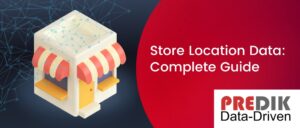As the analytics field continues to advance, we see more and more industries leveraging the opportunities it presents. Healthcare organizations are now hiring data analytics or data science service providers who can help them find solutions that will reduce costs, find tailored treatments for patients, and protect data assets.
So, how can predictive analytics models contribute to healthcare? What risks do hospitals and other organizations in this field face? In this guide, we’ll go over this in detail, and you can reach out to PREDIK Data-Driven for expert data science solutions.
Predictive Analytics in Healthcare
Predictive analytics helps us make predictions regarding future activities. A traditional approach would be to use past information and make forecasts. In predictive analytics, different techniques like Machine Learning (ML) and Artificial Intelligence (AI) are employed that use both real-time and historical data.
In healthcare, there are huge amounts of data—from administrative paperwork to patients’ health records to insurance claims. Therefore, predictive analytics solutions use big data analytics solutions and rely on AI.
Prevents Readmission
Readmission costs are high. Almost $26 billion is spent on annual readmissions. Hospitals are penalized to prevent this. With predictive analytics, healthcare organizations can identify those patients who have a high probability of readmission.
A predictive model will assign a score to each patient. To reduce patient turnovers, doctors can do follow-ups and ensure they discharge only when they’re the patient won’t be readmitted.
Manage Population Healthcare
Another great use of predictive analytics in healthcare is that medical institutions can identify the risk of chronic diseases in patients. They can offer them preventative care to stop the disease’s symptoms from progressing. They’ll assign scores to each patient, which will vary based on age, demographics, age, and previous illnesses.
Additionally, predictive analytics can also be used to identify various health trends amongst the general population. They can discover health trends and conclusive findings. For example, a study uncovered that alcohol consumption is causing liver diseases resulting in deaths.
Enhanced Cybersecurity
Cyberattacks are very frequent, even in the healthcare sector. Medical records are constantly being compromised, and organizations cannot stop these breaches. Using predictive analytics, healthcare institutions can find AI solutions that will block high risks, monitor their data, and find any changes. They can also use multi-factor authentication.

Forecasting No-Shows
The healthcare industry loses around $150 billion annually when people don’t show up for appointments. This means an average loss of $200 per no-show appointment. Doctors can use predictive analytics so they can find out which patients would be skipping an appointment without any prior notice. They can avoid revenue loss and improve their services for patients who do show up.
At PREDIK Data-Driven, we provide advanced data analytics solutions. Businesses in the healthcare and pharmaceutical industry can check out our big data analytics solutions, location analytics solutions, and market assessment tools.
For a demo, reach out to us today.


